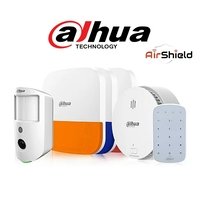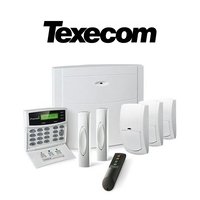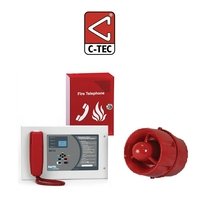TP-Link Powerline Adapters; Can I mix or use different ?

The alternatives to extend the range of the Internet connection in the UK are many and varied: for example, you can use a WiFi amplifier, choose to install a WiFi Mesh network, or even run an Ethernet cable through the ceiling. Although simpler than all this is to use TP Link Powerline adapters And what is a TP-Link Powerline for? In a very simplified way, to extend the reach of the network using the electrical installation of our house.
It is by no means new technology, but it is really useful for homes in which the Wi-Fi connection does not reach all the rooms and it is not feasible to carry a high-speed Ethernet cable from one end of the house to the other. Today we are going to learn what PLC (Power Line Communications) technology is and how TP-Link Powerline setup. Also, if you are asking yourself “Can I mix TP Link Powerline adapters”, you can find the answer in this article.
What exactly are TP Link Powerline adapters and what are they used for?
PLC stands for Power Line Communications, which can be translated as ‘communications through the power line’. It is a series of technologies that allow us to use the cables of the electrical installation of our house to take the Internet from one point to another point. For this reason, TP Link Powerline adapters are really easy to use and popular in the UK since the installation has been done for years: you only have to connect two devices to two sockets. These devices are commonly known as “PLCs”.
What these TP-Link Powerline adapters do is they send the data from our Internet connection using the same cable through which the electrical network circulates. That signal that carries the data is known as a “carrier signal.” For this, signals of different frequencies and voltage are used. The electrical current has a frequency of 50 Hz and 220 volts, while the data signal uses a much lower voltage and a much higher frequency (between 2 and 30 MHz).
Thus, at the destination end, the second PLC is capable of discriminating between one signal and another and separating the electrical current from the data. For this reason, PLCs only need one plug to work, since they receive both energy and information through the same current cable and both are separated inside the PLC. Also, you can read How does TP link work.

TP-Link Powerline adapters
Important: Always plug the TP Link Powerline adapters into the power outlet
It should be noted that electrical installations may have interference when they are saturated in the UK. If you have a powerful appliance running (say a washing machine), the speed may be reduced because the washing machine is making “noise”. To reduce interference, make sure you plug the TP Link Powerline adapter away from these appliances and plug it directly into the wall outlet, never into a power strip/extension cord.
Can I mix multiple TP Link Powerline adapters?
A common question asked online is whether more TP Link Powerline adapters can be added to a network and whether two or more separate powerline/PLC networks can be created within the same house and on the same electrical wiring.
In short, if you are wondering “Can I use two sets of powerline adapters”, it is entirely possible to create a network of separate Powerline TP-Link adapters within the same circuit, as well as keep adding more adapters to expand a single network. Which option you choose depends on factors such as privacy and possible congestion on a single powerline network.

How to add a third TP-Link Powerline adapter to the existing network
This is the simplest method and simply involves adding new TP Link Powerline adapters to different outlets in a house so they can join the existing powerline network.
This is great as bandwidth needs to grow in the home for streaming, gaming and downloading and people want strong cable Internet connections instead of Wi-Fi for better performance over distance.
We’ve found that modern powerline adapters such as TP-Link TL-PA4010P KIT are so good at detecting each other that often formal “pairing” isn’t even necessary to add them to a network.
If you just plug them in, they will automatically communicate with the other adapters and connect to the network. TP Link products are especially known for being “plug and play” devices for easy network expansion in Manchester.
However, there is a formal pairing process that can help you safely add new TP Link Powerline adapters to an existing network. This is done using the pairing button as follows:
TP-Link TL-PA4010P KIT Powerline Starter: How to connect the third adapter
- Plug in the third adapter and hold the “pair” button on it for a few seconds.
- Within 2 minutes, find and press the “pair” button on one of the other two network adapters for a few seconds.
- The TP-Link Powerline adapter lights will begin to flash on each adapter to indicate that they are searching for each other. Wait about 60 seconds for the process to complete. Once paired, all lights will stop flashing and turn solid to indicate a connection.
- You have now safely added the third adapter to the other two. All three adapters are now on the same PLC network.

TP-LINK TL-PA4010P KIT Powerline Starter
Using this method, you can safely add as many TP Link Powerline adapters as you like to a home network in the UK to provide you with wired access points in different parts of the house. This is great as it allows home networks to expand as bandwidth needs increase.
Create separate PLC networks within the same electrical circuit
This is the most unique method of creating separately paired TP Link Powerline adapter networks within the same home in Manchester. This is also entirely possible and may be desirable for various reasons.
There may be a slight decrease in performance for the network as a whole if too many adapters are added to a single powerline network. This is by no means a proven fact but it is something to watch out for if many adapters are on a single network.
If you find that signal strength and throughput drop, then it might be a good idea to create separate PLC networks to see if this improves overall throughput.
This is easy to do and requires only minor adjustments in how the adapters are configured. You just have to pair only the TP Link Powerline adapters you want to be on the network and not the others. It’s best to connect them close together and pair them first before moving them to where you need them around the house.
For this instruction, we are going to use TP-Link Mercusys Powerline Starter Kit AC1000 GIGABIT as an example, because it’s one of the best Powerline products available in the UK:
- If you already have adapters A, B, and C currently on a PLC network, leave them alone and don’t press any pair buttons on them.
- Plug adapters D and E, the new ones you want on a separate network, into a pair of nearby wall sockets.
- Press the “pair” button on one of them for a few seconds, and within 2 minutes press and hold the “pair” button on the other one.
- When the adapters are connected, the lights will stop flashing and turn solid.
- Adapters D and E are now on their own secure powerline network and separate from A, B, and C. You can move them anywhere in the house where you need them.
To add more adapters to this specific network, follow the normal pairing process described previously.
TP Link Powerline mix and match: Combination of different brands of Powerline adapters
Now let’s answer a related but slightly different question – can you mix and match TP Link Powerline adapters if they are different makes or models?
The short answer is that you can probably mix and match modern powerline adapters and they will have a good chance of working together. Any pair of TP Link Powerline adapters that meet the same HomePlug AV standards will actually work together, as incompatibility is a requirement to be certified to that standard.
Standards for powerline adapter compatibility are set by the HomePlug Alliance, which is like a voluntary industry body for the PLC adapter industry. It helps set standards and provides guidance and support to the powerline adapter industry to improve range and connectivity solutions in the home.
Conclusion
We can use different devices to connect to the Internet and not have speed or stability problems. These devices that help us improve the connection include amplifiers, Wi-Fi Mesh systems or PLC devices. In this article, We talked about TP Link Powerline adapters and whether you can mix them with other adapters to get a better connection. We also explained how we can use multiple devices to be able to take the Internet connection to more areas without problems.










